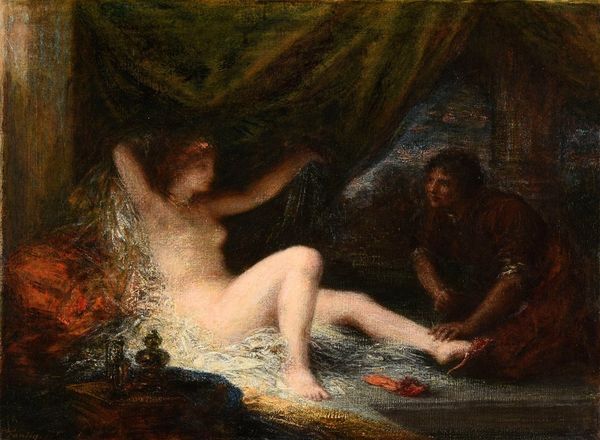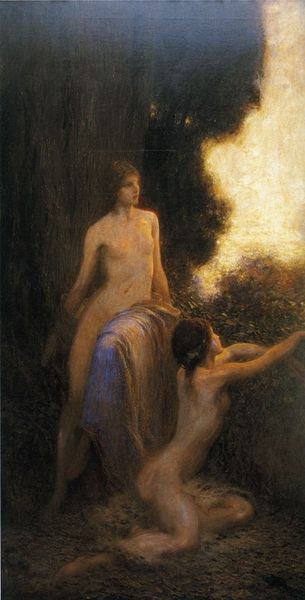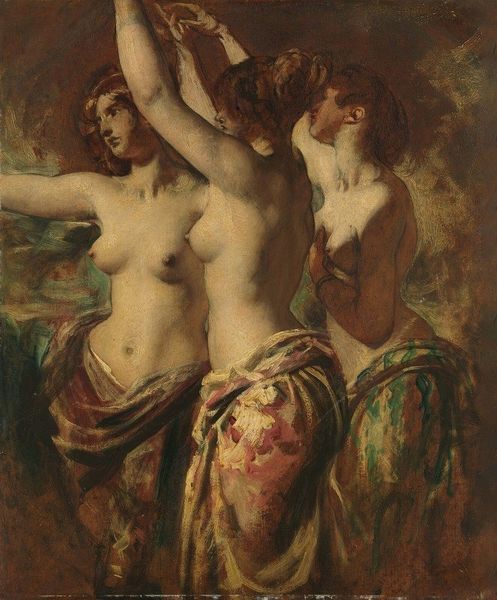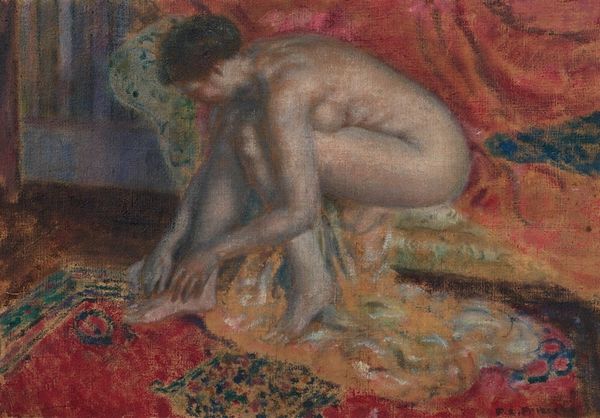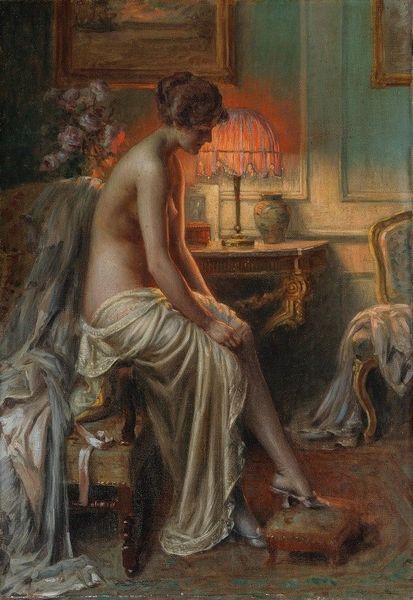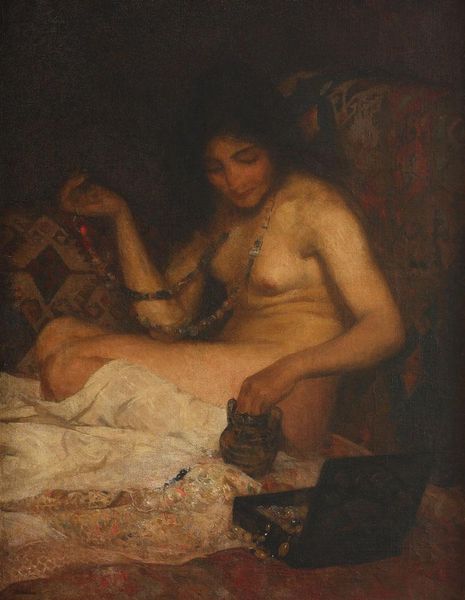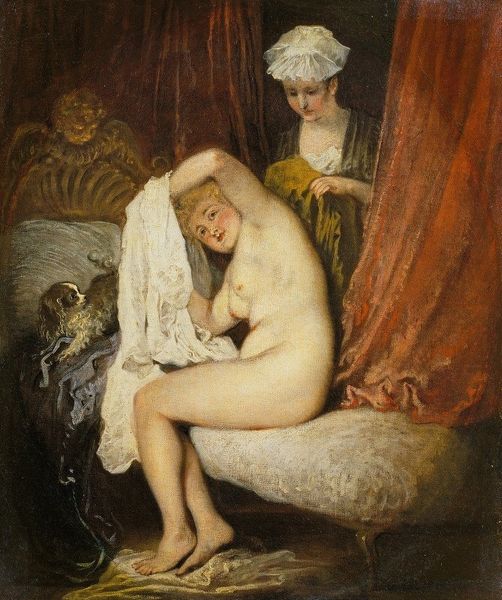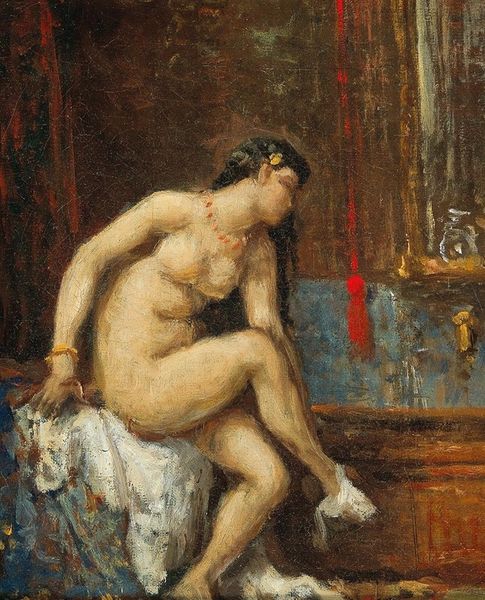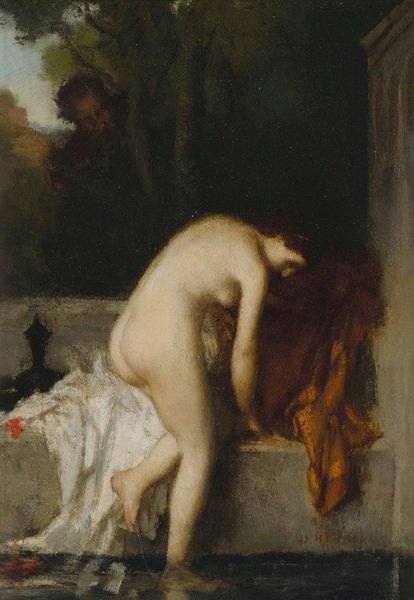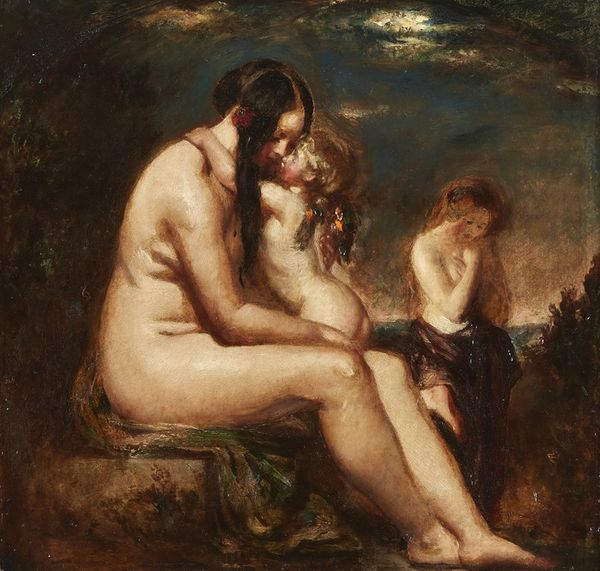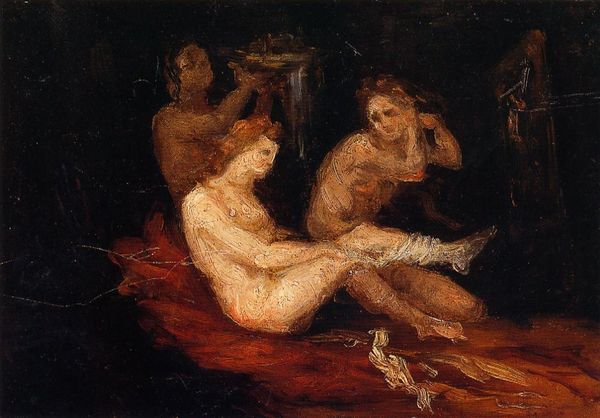
painting, oil-paint
#
figurative
#
painting
#
oil-paint
#
figuration
#
oil painting
#
intimism
#
genre-painting
#
nude
Copyright: Public Domain: Artvee
Curator: Here we have "The Green Apple," an oil painting by James Jebusa Shannon. My initial reaction is a study in subdued intimacy, the figures are caught in a moment of quiet reflection. Editor: Absolutely, and I immediately notice the materiality – the visible brushstrokes, the layers of oil paint. You can almost feel the texture of the canvas beneath your fingertips. This physicality emphasizes the labor involved in its creation, the artist's hand so present. What were the common practices and materials used in oil painting at the time that might tell us more? Curator: Shannon’s choice of figuration and the specific arrangement, the placement of these nude female forms within an enclosed space, echoes and subtly challenges traditional art historical portrayals of women. Are we invited to gaze, or are we intruding on a private moment? The apple itself becomes symbolic; innocence? temptation? or merely a quiet snack? Editor: I'd argue that the inclusion of the nude female forms is relevant to broader conversations regarding sexuality, gender, and power in the history of art. How were women perceived in the historical period during which it was painted, and who would have consumed images such as these? What are we meant to understand? The draping fabric and simple interior are also so intriguing from a material perspective. Curator: That question of consumption is central to my thinking here. Shannon wasn't merely creating a pretty picture; he was engaging with a complex set of social and artistic dialogues of the time. The ‘intimate genre painting’ provides the perfect setting to ask how notions of class and privacy are represented through depictions of interiors. The very ‘ordinariness’ feels pointed. Editor: Right, the green apple functions both as literal object and social signifier, embedding within an intimate domestic sphere which is being observed. The fact that Shannon painted in oil, traditionally a medium of the elite, but focused on such a 'banal' or quiet moment of leisure speaks to larger art world trends that elevated certain material items to ‘high art.’ Curator: Considering how Shannon renders the subjects in his oil painting, one can argue that in 'The Green Apple,' Shannon invites us to reassess traditional modes of representation, to examine not just what we see, but how we see and the contexts in which art is both created and received. Editor: Indeed, a closer look at "The Green Apple," underscores art's potential to serve not only as a marker of aesthetic accomplishment, but as an active agent within intricate networks of making, power, meaning, and consumption.
Comments
No comments
Be the first to comment and join the conversation on the ultimate creative platform.
